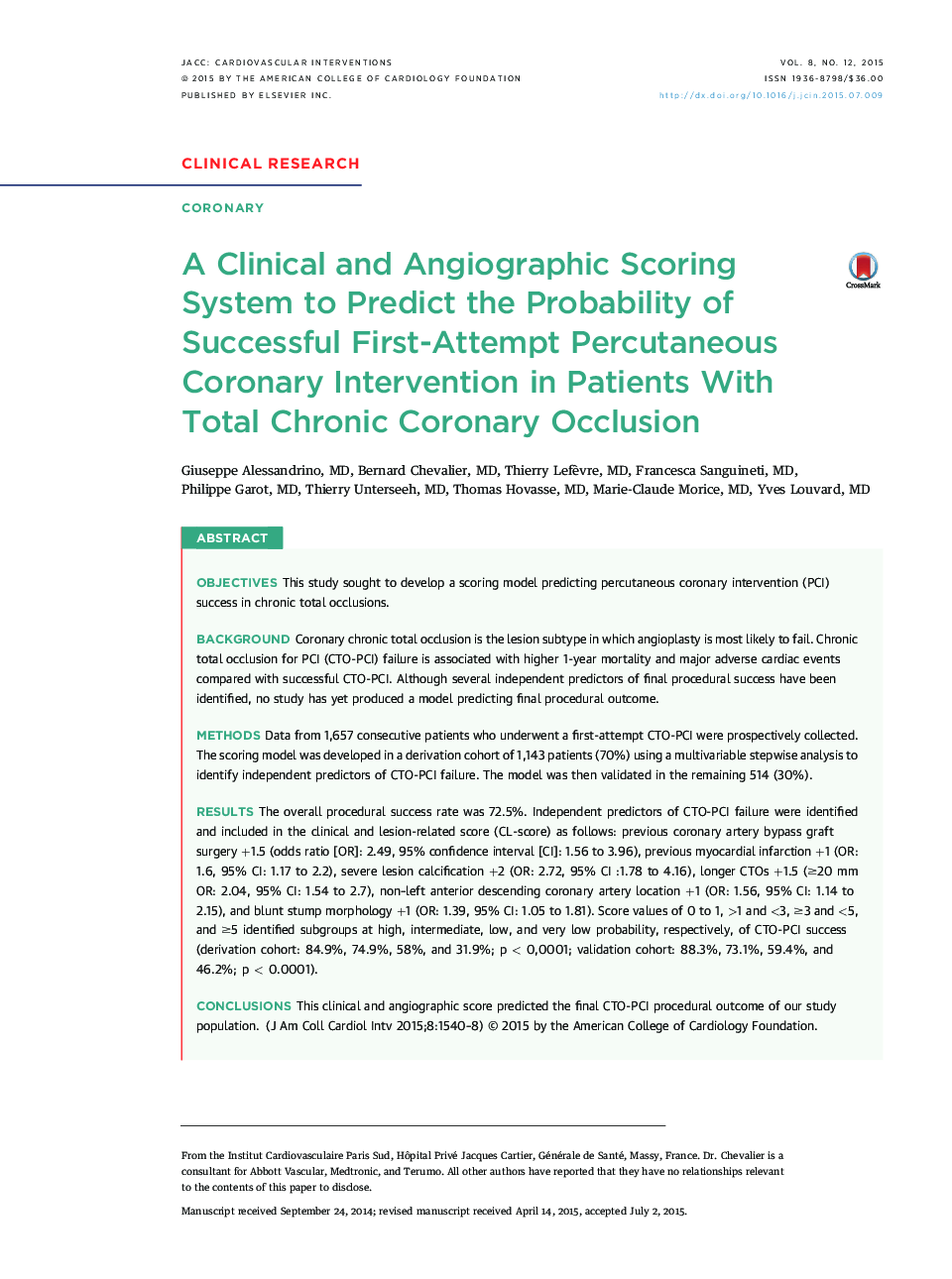| Article ID | Journal | Published Year | Pages | File Type |
|---|---|---|---|---|
| 2940210 | JACC: Cardiovascular Interventions | 2015 | 9 Pages |
ObjectivesThis study sought to develop a scoring model predicting percutaneous coronary intervention (PCI) success in chronic total occlusions.BackgroundCoronary chronic total occlusion is the lesion subtype in which angioplasty is most likely to fail. Chronic total occlusion for PCI (CTO-PCI) failure is associated with higher 1-year mortality and major adverse cardiac events compared with successful CTO-PCI. Although several independent predictors of final procedural success have been identified, no study has yet produced a model predicting final procedural outcome.MethodsData from 1,657 consecutive patients who underwent a first-attempt CTO-PCI were prospectively collected. The scoring model was developed in a derivation cohort of 1,143 patients (70%) using a multivariable stepwise analysis to identify independent predictors of CTO-PCI failure. The model was then validated in the remaining 514 (30%).ResultsThe overall procedural success rate was 72.5%. Independent predictors of CTO-PCI failure were identified and included in the clinical and lesion-related score (CL-score) as follows: previous coronary artery bypass graft surgery +1.5 (odds ratio [OR]: 2.49, 95% confidence interval [CI]: 1.56 to 3.96), previous myocardial infarction +1 (OR: 1.6, 95% CI: 1.17 to 2.2), severe lesion calcification +2 (OR: 2.72, 95% CI :1.78 to 4.16), longer CTOs +1.5 (≥20 mm OR: 2.04, 95% CI: 1.54 to 2.7), non–left anterior descending coronary artery location +1 (OR: 1.56, 95% CI: 1.14 to 2.15), and blunt stump morphology +1 (OR: 1.39, 95% CI: 1.05 to 1.81). Score values of 0 to 1, >1 and <3, ≥3 and <5, and ≥5 identified subgroups at high, intermediate, low, and very low probability, respectively, of CTO-PCI success (derivation cohort: 84.9%, 74.9%, 58%, and 31.9%; p < 0,0001; validation cohort: 88.3%, 73.1%, 59.4%, and 46.2%; p < 0.0001).ConclusionsThis clinical and angiographic score predicted the final CTO-PCI procedural outcome of our study population.
